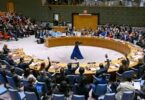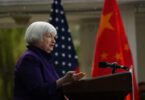The UN report on South Asian economies titled, World Economic Situation and Prospects, projects a fluctuating growth pattern of Pakistan’s economy in the next few years. It predicts that GDP growth rate of the current fiscal year will be 3.3 percent which will drop to 2.1 percent in the next fiscal year.
The report highlights the worrying macroeconomic imbalances of balance of payments crisis significant improvement in current account deficit notwithstanding and alarmingly rising public debt which has reached 85 percent of the gross domestic product. It attributed the fall in aggregate demand and substantial shrinking of investment to galloping inflation. However, the report predicts a steady recovery of the economy from FY21, provided the stabalisation measures suggested by IMF are successfully implemented which include productive investment in infrastructure and strategic capital development.
It is flabbergasting that government team of economic measures comprising multilateral donor agencies technocrats and local financial wizards of rich experience have not set the direction of the economy to put it on the revival path during the past one and half year. Agriculture is in the state of acute stagnation and industry is on the downturn with decline in production of both large and medium scale manufacturing. It will make it difficult to sustain the modest growth of 4.5 percent during the remaining months of the current fiscal year. The continued decline in the production of agriculture and manufacturing sector will offset the pace of increase in exports which was facilitated by over 52 percent currency depreciation against the US dollar and other major currencies of international trade.
Moreover, currency depreciation has impacted the output of export industries as these industries consume a lot of imported raw material and intermediate goods. Currency depreciation has made these inputs of export products very expensive. Textiles accounts for 60 percent of exports value which has shown a decrease of 0.4 percent. The rigid policy of imports compression has narrowed the current account deficit by 75 percent to $2.15 billion during the first half of current fiscal year. But it has also hit the productivity of manufacturing sector.
The addition of 313 new items of exports in the zero import duty lists by China under Free Trade Agreement Phase-2 may further bring down the current account deficit. However, it remains to be seen how the exports of textiles, bakery items, meat, potatoes, onions, mangoes, citrus fruits and cherries will pick up as it will require quality improvement. The surplus for exports of traditional commodities depends on big spurt in the productivity of agriculture sector which is in a state of deep crisis as its growth has remained stagnant during the past 12 years.
The exorbitant cost of inputs such as fertilizers, high quality seeds, pesticides, insecticides and water shortages have lowered the net return ratio(NRR) on investment for small farmers to less than1 whereas this ratio used be 2-3 percent. The Prime Minster has directed for price reduction of Rs.400 per 50 kilogram bag of fertilizers which will not increase the NRR for small farmers who serve as main agent of enhancing agriculture production. The fertilizers companies had collected gas infrastructure development cess of Rs. 533 billion from farmers since 2011 which was a major cause of unaffordable price of this input. Moreover, the prices of high yield varieties of hybrid seeds, insecticides and pesticides also need brought down to the affordable limit for small farmers.
The UN report has also dwelt on the depressing impact of regular increases in electricity and gas tariffs on the economy’s downturn. It suggests a reasonable reduction in these tariffs in future. It also compares the spectacular performance of high and sustained economic growth rate of over 7 percent of natural resources deficient Bangladesh with resources rich Pakistan and attributes the success of the former to its business friendly environment. Will the UN report be considered seriously by the government for taking corrective measures?






